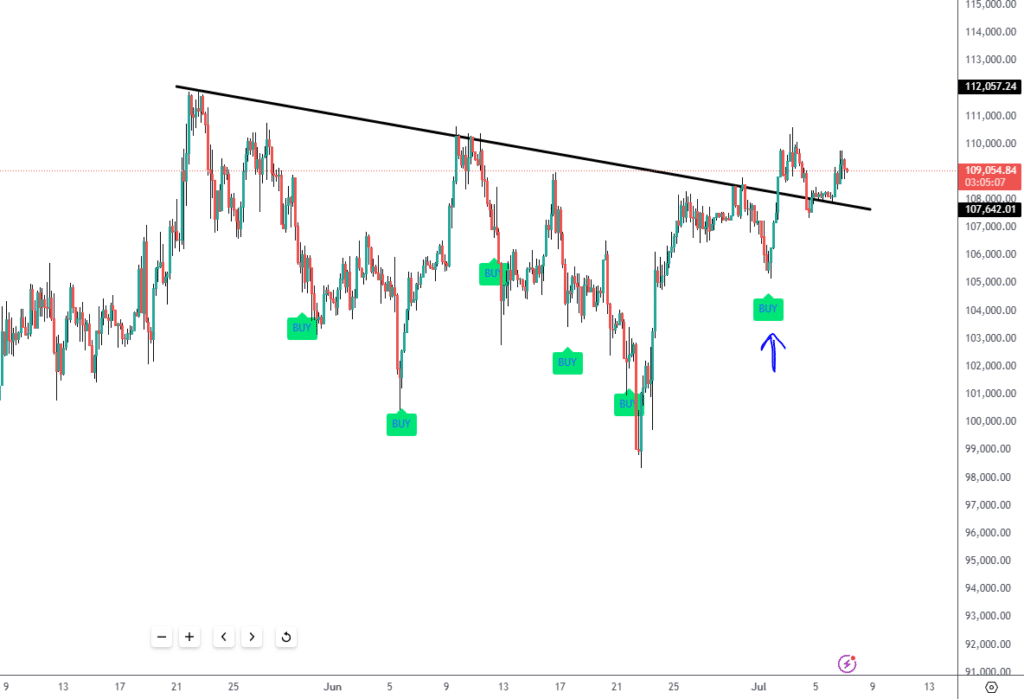
If you have been following my content, you already know I talk a lot about global liquidity. It is one of the most powerful tools that most people overlook in the Bitcoin space. If you are trying to understand where Bitcoin might go next, this is something you absolutely need to know.
Why Global Liquidity Even Matters
Let us keep it simple.
Whenever the flow of money increases in the global economy, asset classes tend to rise. Stock markets go up. Gold follows. And Bitcoin usually moves in the same direction. This is not just theory. It is a long term pattern based on real-world data.
Research from Lyn Alden and 21Shares shows there is a strong correlation between Bitcoin and the global M2 money supply. In fact, Lyn Alden’s research highlights a long-term connection between Bitcoin price movements and increases in money supply across developed economies.
A separate peer-reviewed study from Kingston University found that global dollar liquidity alone explains over 65 percent of Bitcoin’s price movement, especially after the COVID period. The authors analyzed multiple liquidity indicators and concluded that Bitcoin’s behavior is heavily influenced by shifts in central bank balance sheets and the broader money supply environment.
The Tool I Use
I use a chart available on TradingView. It shows the total global money supply, commonly referred to as M2. This chart combines data from major economies like:
- The United States
- The Eurozone
- Japan
- China
- The United Kingdom
It helps track how much money is circulating worldwide. And when you compare that to Bitcoin’s price over time, something really interesting stands out.
You can literally see how Bitcoin moves in sync with this global liquidity.
To view this chart, you can use the Global M2 money supply overlay on TradingView or visit Bitcoin Counterflow, which regularly updates the global liquidity data in a visual format.
What the Chart Actually Tells Us
When global money supply increases, Bitcoin tends to rise.
When global liquidity dries up, Bitcoin usually pulls back.
This pattern has been reported across multiple platforms including CoinTelegraph and NewsBTC. These outlets have pointed out that Bitcoin tends to lag behind liquidity movements by about two to three months, but the connection is consistent and observable across past market cycles.
A CoinTelegraph report noted that if global M2 continues to rise at its current pace, Bitcoin could head toward the 150 to 170 thousand dollar range during this cycle. While that is not a prediction, it is a projection based on historical correlation between Bitcoin and money supply data.
Some experts do argue that the correlation may be coincidental or too neatly drawn. However, even critics acknowledge that this macro signal has held up directionally in nearly 80 percent of the market cycles since Bitcoin’s creation.
We Have Seen This Before
This is not a new phenomenon.
In previous cycles — such as the years following the 2008 global financial crisis, during the pandemic response in 2020, and throughout multiple rounds of quantitative easing — asset prices climbed when liquidity surged. Gold went up. Equities rallied. Bitcoin followed a similar path.
When liquidity was pulled back, those same assets dropped. The connection between monetary expansion and asset price inflation is well documented in both macroeconomic research and real market behavior.
What Does This Mean for You
This is not financial advice. It is a reminder to pay attention to what actually moves markets.
If you are investing, trading, or just learning, this is a simple but powerful lens to add to your thinking. You do not need to monitor the news 24 hours a day. Instead, look at where the global money is going and how much is being created.
Because at the end of the day, Bitcoin does not move in isolation. It follows the money.
Quick Recap
Here is what we covered:
- Global liquidity matters more than short term headlines
- Btc tends to follow the direction of global money supply
- You can track this trend using free tools like TradingView and Bitcoin Counterflow
- Right now, global liquidity is rising and that could point toward upside in Bitcoin
Sources and References
- Lyn Alden Investment Strategy
https://www.lynalden.com/bitcoin-a-global-liquidity-barometer - 21Shares Research
https://www.21shares.com/en-us/research/will-liquidity-continue-driving-bitcoins-price - Kingston University Research on Global Liquidity and BTC
https://papers.ssrn.com/sol3/papers.cfm?abstract_id=4904716 - Bitcoin Counterflow Global M2 Chart
https://bitcoincounterflow.com/charts/m2-global - CoinTelegraph Report on Global M2 and BTC Projections
https://www.tradingview.com/news/cointelegraph:259d56103094b:0-bitcoin-price-target-sits-around-170k-as-global-m2-supply-reaches-record-high - NewsBTC Analysis on Liquidity and Bitcoin
- S and P Global Report on Asset Class Correlations
Wired Magazine Report on BTC and Liquidity Trends